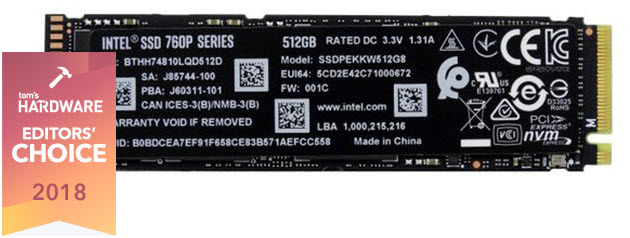Early Verdict
If you want to play with NVMe or fill a slot on your motherboard, the 128GB 760p will meet your needs. Most users will find the 256GB has a much better price to performance ratio. If you just need a small boot drive for a spare system or family member, this drive is cost-competitive with 128GB SATA SSDs. It's also a little faster.
Pros
- +
Excellent software package
- +
Intel reliability
Cons
- -
Overall value trails the 512GB and 256GB
- -
Too small for enthusiasts
- -
High latency
Why you can trust Tom's Hardware
Features & Specifications
Update 3/2/2018: We have added the 256GB and 128GB capacities to the original review, which only included the 512GB drive. The review of the 256GB and 128GB drives begins on page three. Our conclusions have also been updated on page four.
Intel's 760p NVMe SSD is the successor to the company's 600p, which is an SSD that's admired more for its price than performance. The new 760p comes with bold claims of twice the performance and capacity of the 600p along with half the power consumption. Better yet, the 760p series retains the same entry-level SSD pricing model even though it sports up to 3,200 MB/s of throughput and 350,000 random read IOPS. Intel claims the 760p offers an amazing mix of performance and price, so this just might be the NVMe SSD we've been waiting for.
Intel has an established history of low failure rates, solid performance, and, to tie it all together, premium pricing. It's not like Intel to release true value SSDs that undercut other companies on price, so it was surprising when Intel's previous-generation 512GB 600p challenged the MyDigitalSSD BPX at the $200 price point. The 600p suffered from low performance, though, so Intel had to market it as a SATA replacement.
The 600p's performance issues stemmed from its first-generation 3D NAND. We tested several SSDs with Intel's inaugural 3D NAND, but regardless of the SSD controller, the drives suffered from high latency. The 3D NAND came from the IMFT (Intel/Micron Flash Technologies) joint venture, and thankfully, the second generation has improved drastically. We've tested several new SATA SSDs with the new 64-layer flash and performance has increased to class-leading levels while prices have decreased. That's a win-win.
The Intel SSD 760p is the first retail NVMe SSD we've tested with Intel's new 64-layer flash. The low-overhead protocol should expose the true potential of the storage media by removing the bandwidth limitations of SATA.
Silicon Motion, Inc.'s new SSD controller is a key piece to the performance puzzle. The company has three different SM226x models that address different market segments. Intel's 760p uses the SM2262, which is an upper mainstream variant that we never expected to see at these low price points. The entry-level SM2263XT HMB controller already impressed us even though it was designed it for DRAM-less SSDs. The Intel SSD 760p with the SM2262 should perform even better.
Specifications
The Intel SSD 760p comes to market in 128GB, 256GB, and 512GB capacities. Intel will roll out 1TB and 2TB models later this quarter. These models are just one hop away from fulfilling Intel's "3.5 TB SSD the size of a stick of gum" prophecy it made when it announced its 3D NAND in 2016.
Get Tom's Hardware's best news and in-depth reviews, straight to your inbox.
Intel's performance claims teeter on the absurd. The 760p 512GB delivers up to 3,200/1,670 MB/s sequential read/write speeds. Random read performance stretches up to 350,000 IOPS for the larger models, paired with an 'up to' 280,000 random write IOPS. These are the same performance numbers we see with products that cost twice as much. Intel also effectively doubled the 600p's performance while using only half the power.
Performance shrinks as we move through the smaller models, but even the 128GB drive pushes enough performance across the PCI Express bus to outperform the fastest SATA SSDs ever built. It appears that Intel wants to replace SATA SSDs as the boot drive in your PC.
Features
Once you get past the high performance and low price, the 760p series is a fairly basic consumer SSD. The consumer model doesn't feature encryption or a fancy heat sink. Intel did release a business-focused 760p model today that provides accelerated TCG Opal 2.0 and eDrive hardware encryption technology. The business model also enables Intel's Remote Secure Erase through vPro Platform Security.
We had to dig into Silicon Motion's SM2262 documentation to gain further insight into the new features. The eight-channel SM2262 controller improves on the previous generation and serves primarily as a vessel to bring 64-layer NAND to market. SMI carried over most of the IP from the previous-gen SM2260 controller, but there are some subtle differences to the caching algorithms that help increase performance in random workloads.
Most of the real features go unseen in the flash. The move to 64 layers is more than a normal generational evolution: throughput increases, latency decreases, and Intel cut the physical size nearly in half. The number of bits per wafer exploded, and that's why the 760p is coming to market with such aggressive pricing even though Intel could have easily charged more for this product.
Pricing, Warranty & Endurance
The 760p starts at $74 for the 128GB model. The 760p matches the 600p's launch pricing, but the price of some popular capacities increased over the last year. The 256GB 600p currently sells for $139 at Newegg, but the equivalent 760p will cost just $110. The 512GB 760p comes to market at $199 and has a real chance at becoming our go-to NVMe SSD recommendation.
Keeping with the 600p model, Intel also gave the 760p a five-year warranty and the same 72TB of endurance per 128GB of capacity. We haven't tested the 760p's full endurance like we did on the previous generation, but we expect that Intel will adhere to its policy of moving the drive to a read-only state after you exhaust the warrantied endurance.
Software
The new SSD 760p works with Intel's SSD Toolbox software that gives you monitoring and optimization features. Aside from added support for new drives, the software hasn't changed much since its release. Intel also has a data migration tool tucked away on its website, but we had to poke around to find it.
Packaging


The 760p doesn't feature RGB LED lighting like the new Plextor M9Pe, but it does have a vibrant color scheme on the package. In a way, the package tells the 760p story. The 760p graphics are the same as the 600p, but Intel has managed to make those graphics come alive this time around.
Intel didn't print much information on the package. The back of the package displays the five-year warranty, but it lacks performance data. Now that the NAND shortage is over, the SSD section at Best Buy and Fry's should consist of more than two products in the middle of barren shelves. Performance is a true highlight of this series, and giving shoppers easy access to information would make it easier to browse products lined up in the store.
A Closer Look
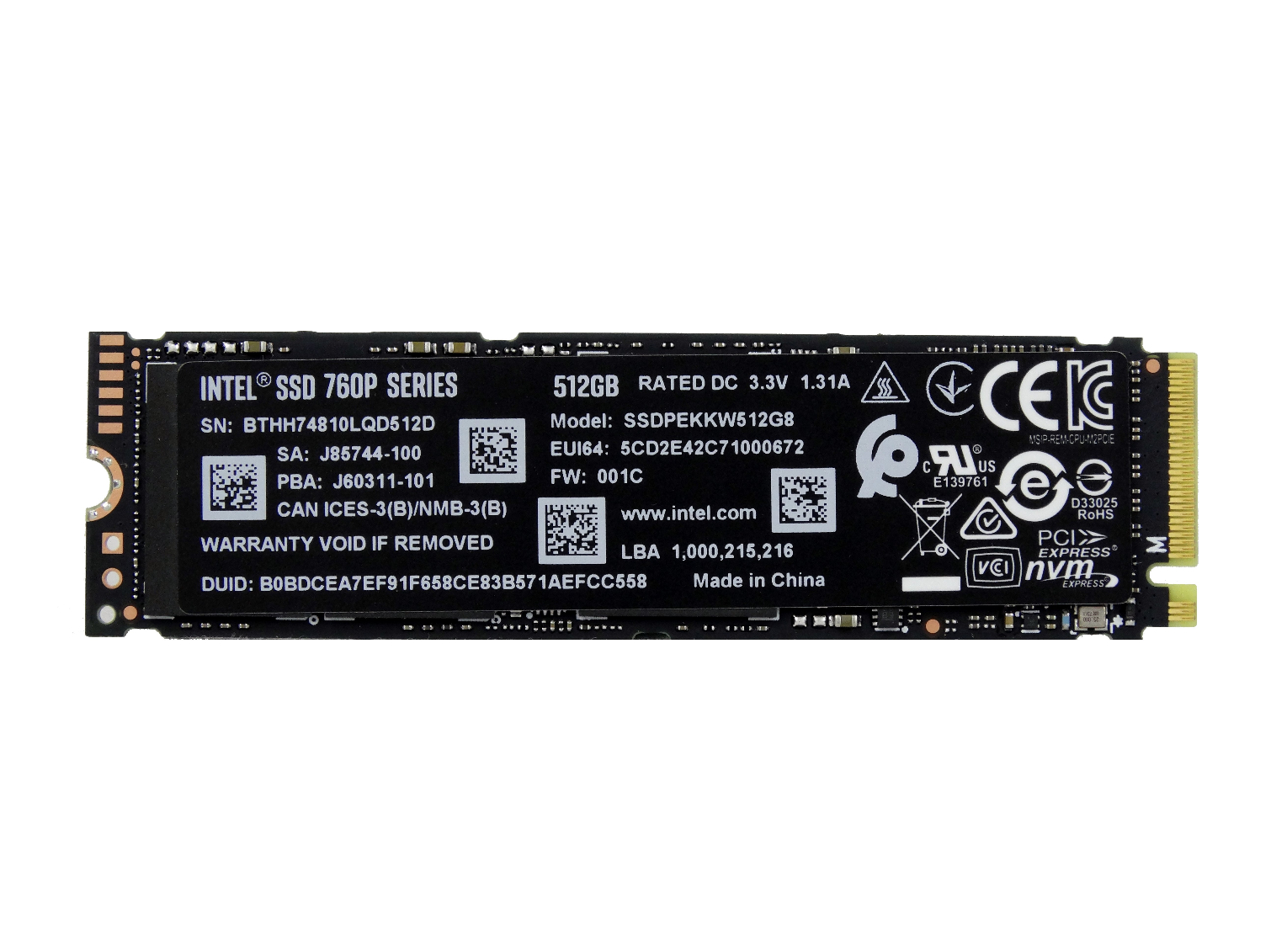
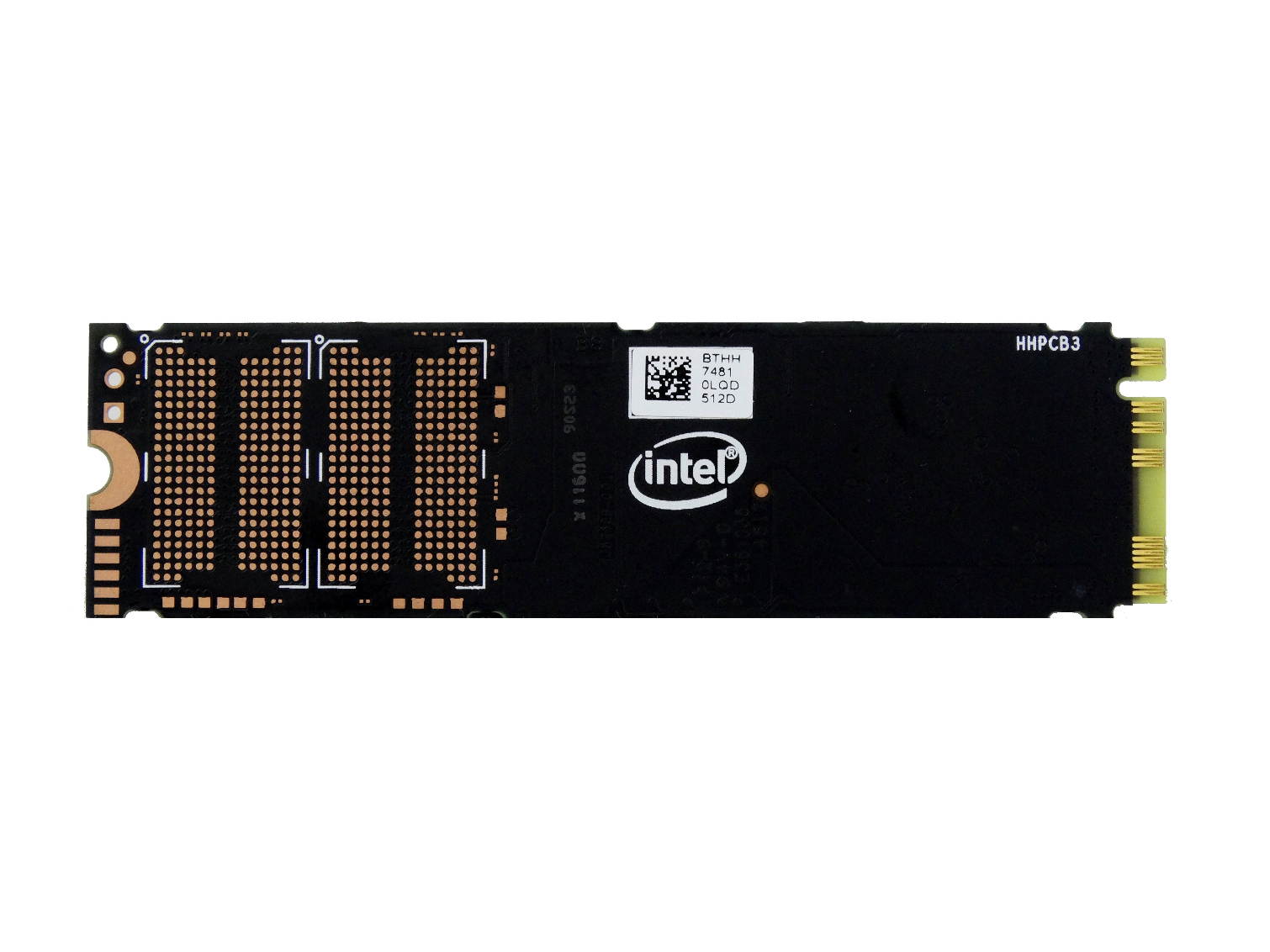
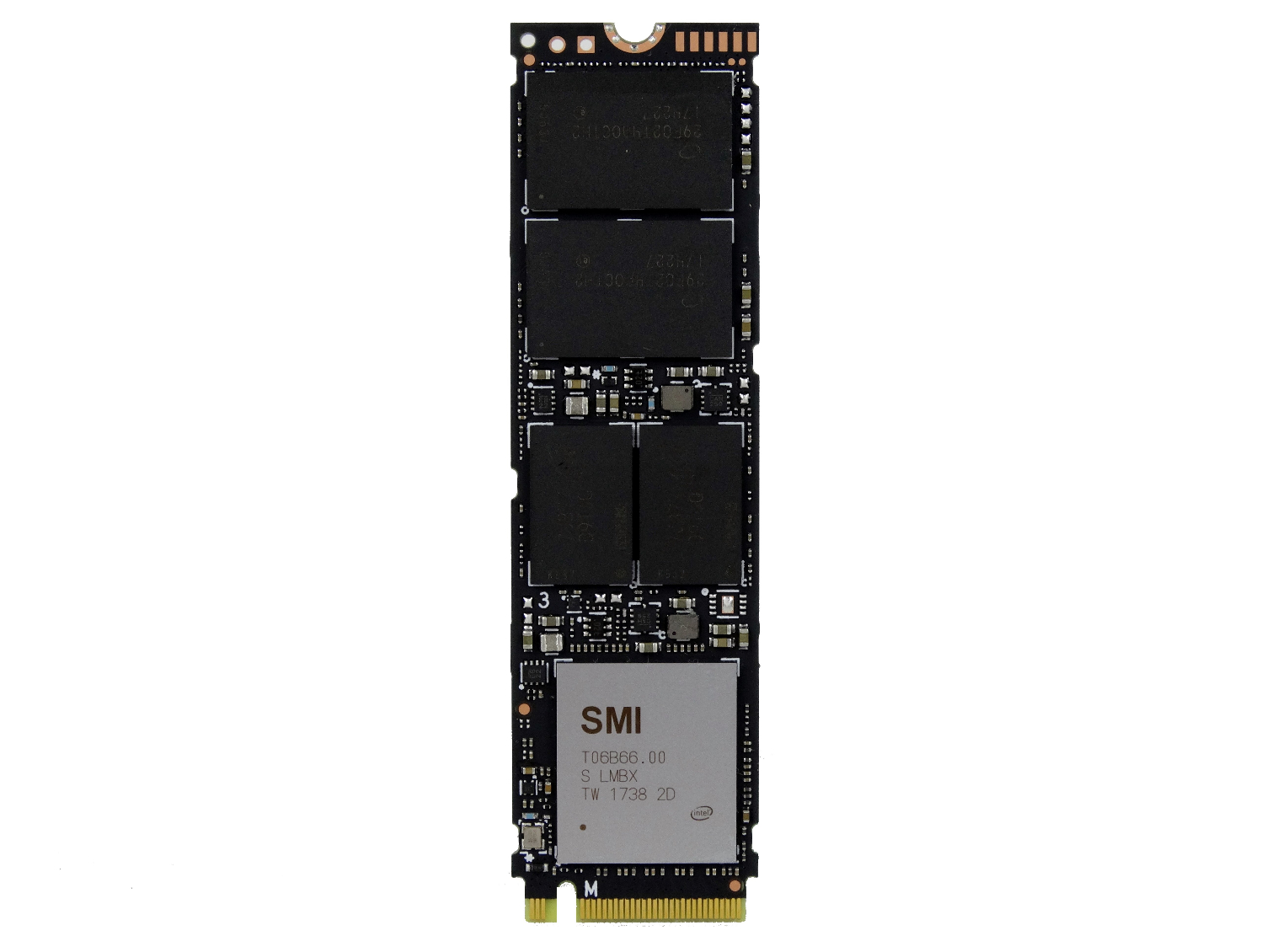
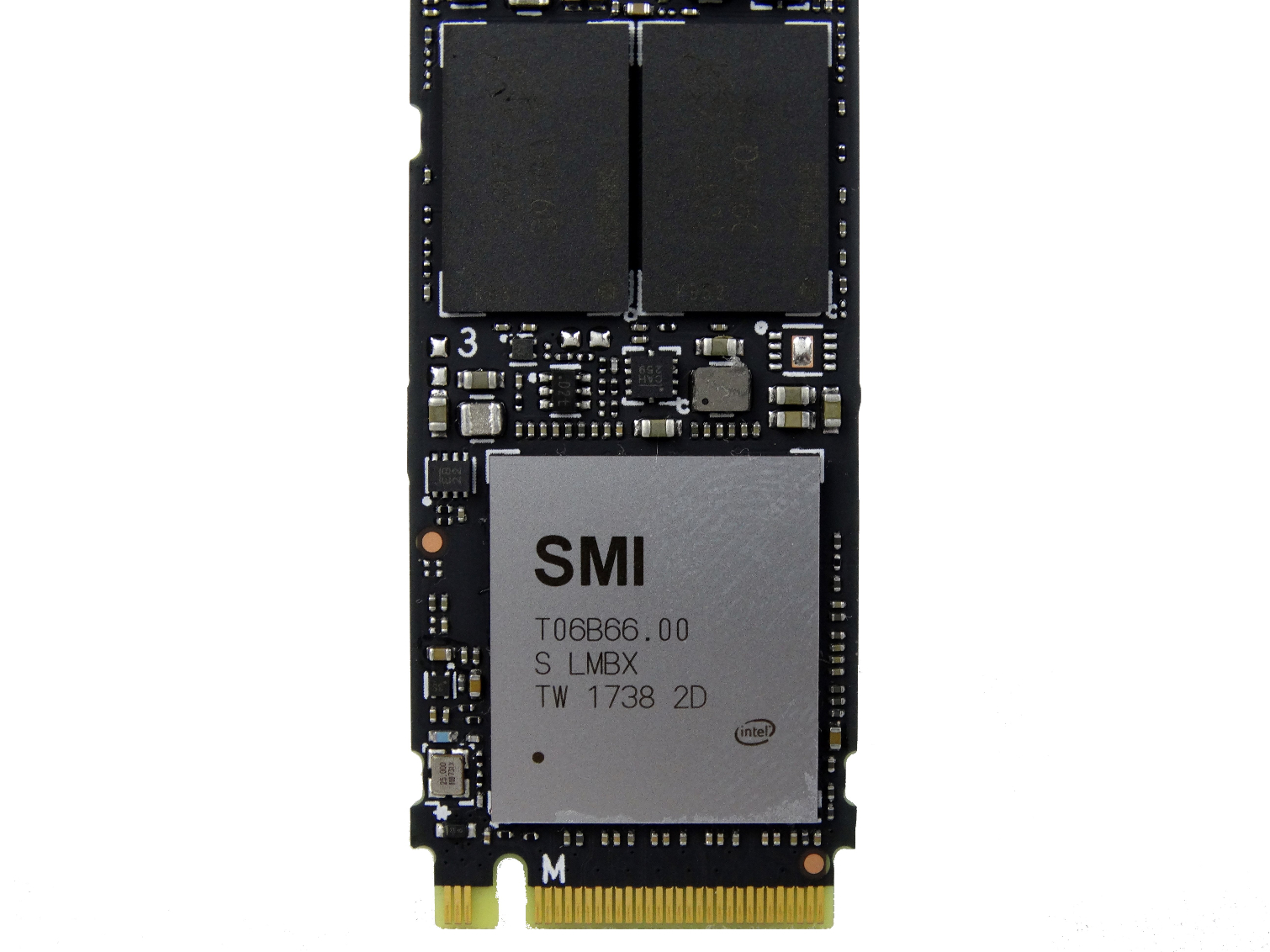

The top of the controller features a thin copper plate with a nickel finish that helps dissipate heat to the outer surface. The label doesn't have a copper strip inside like the layered label that Samsung pioneered (and Corsair later adopted).
The 512GB drive pictured above has a single-sided design that comes packing dual NAND and DRAM packages. The NAND arrangement is typical for this design, but the two 256MB Micron DDR4 packages are not. Most SSDs only use one DRAM package for lower-capacity drives. We're in the middle of a DRAM shortage, so the design could lower costs, especially in the high-capacity drives coming later this year. Intel also tells us controller can issue parallel operations to the dual DDR4 packages. That capability improves translation table lookup times, which increases performance.
MORE: Best SSDs
MORE: How We Test HDDs And SSDs
MORE: All SSD Content

Chris Ramseyer was a senior contributing editor for Tom's Hardware. He tested and reviewed consumer storage.


